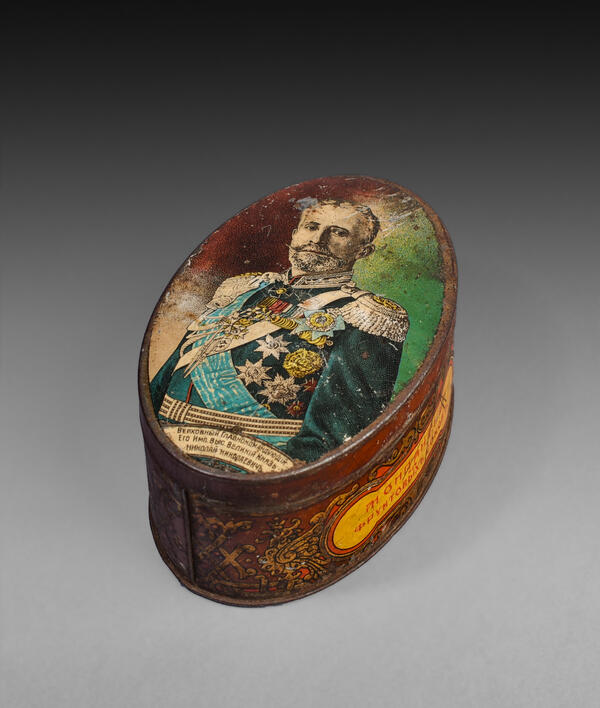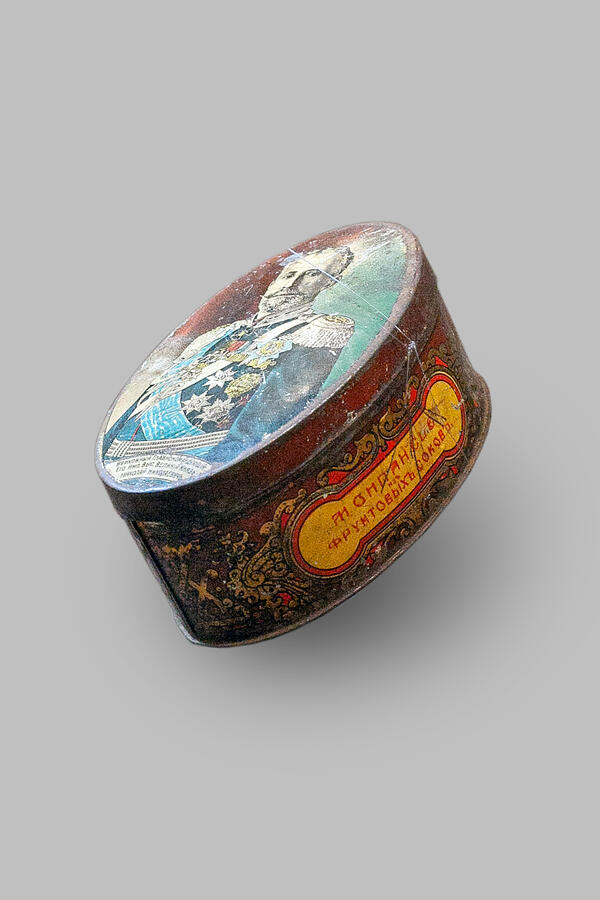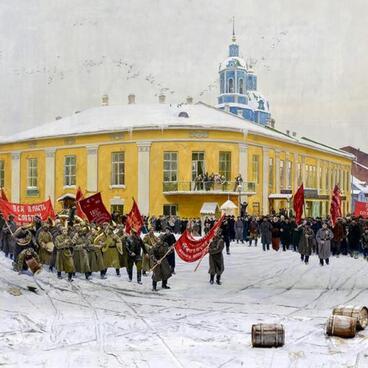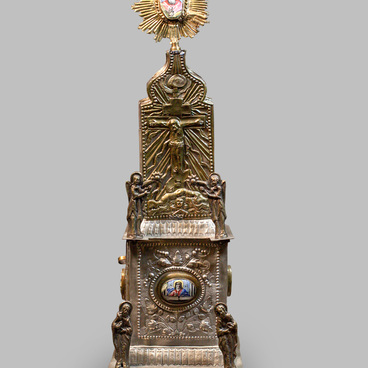In the 19th century, looking for ways to attract buyers, Russian confectioners started packing their products — such as cakes, nougat, sweets, marzipans, chocolate, and cookies — in beautiful boxes decorated with pictures. In the 1880s, a new technique of chromolithography — applying multi-color prints to tin — was invented, and tin packaging became popular.
By the end of the 19th century, packaging for confectionery products was manufactured on an industrial scale. “Tins”, as they were called, provided more reliable protection for goods that should not be stored in damp conditions, including biscuits, gingerbread, caramel, pastille, and other products. The most prominent Russian packaging manufacturers were the “V.V. Bonaker” stock company, the “A. Jacqueau and Co.” printing house, the tin factory of the “Zhestyanka” trading house, the “N.S. Rasteryaev” commercial partnership that performed chromolithography, and others.
As a rule, the shape and design of the box were developed by packaging enterprises. Apart from decorative elements and product advertising, packaging often featured educational information. To celebrate important dates and anniversaries, for example, the Romanov Tercentenary, or the centenary of the Patriotic War of 1812, festive sweets packaging was produced. Sometimes commemorative brochures were placed inside the boxes with the image of members of the imperial family and brief stories about them. Their portraits could also be seen on sweets boxes.
The section “Vyatka during the First World War” of the exhibition “Characters and Events of Vyatka History” features a pastille box that refers to the period of the First World War. Grand Duke Nicholas Nikolaevich was the Supreme Commander-in-Chief of the Russian Army and Navy at the beginning of the First World War.
Pastille was made of fruit juices, syrup, and spices. The lozenges were sold in small tin boxes decorated with colorful illustrations. Such packaging not only protected the sweets from moisture but also attracted buyers. The special word “bonbonnière” was borrowed into Russian from French to designate a sweets box. The term itself came from the word “bonbon” meaning “candy”.
By the end of the 19th century, packaging for confectionery products was manufactured on an industrial scale. “Tins”, as they were called, provided more reliable protection for goods that should not be stored in damp conditions, including biscuits, gingerbread, caramel, pastille, and other products. The most prominent Russian packaging manufacturers were the “V.V. Bonaker” stock company, the “A. Jacqueau and Co.” printing house, the tin factory of the “Zhestyanka” trading house, the “N.S. Rasteryaev” commercial partnership that performed chromolithography, and others.
As a rule, the shape and design of the box were developed by packaging enterprises. Apart from decorative elements and product advertising, packaging often featured educational information. To celebrate important dates and anniversaries, for example, the Romanov Tercentenary, or the centenary of the Patriotic War of 1812, festive sweets packaging was produced. Sometimes commemorative brochures were placed inside the boxes with the image of members of the imperial family and brief stories about them. Their portraits could also be seen on sweets boxes.
The section “Vyatka during the First World War” of the exhibition “Characters and Events of Vyatka History” features a pastille box that refers to the period of the First World War. Grand Duke Nicholas Nikolaevich was the Supreme Commander-in-Chief of the Russian Army and Navy at the beginning of the First World War.
Pastille was made of fruit juices, syrup, and spices. The lozenges were sold in small tin boxes decorated with colorful illustrations. Such packaging not only protected the sweets from moisture but also attracted buyers. The special word “bonbonnière” was borrowed into Russian from French to designate a sweets box. The term itself came from the word “bonbon” meaning “candy”.






